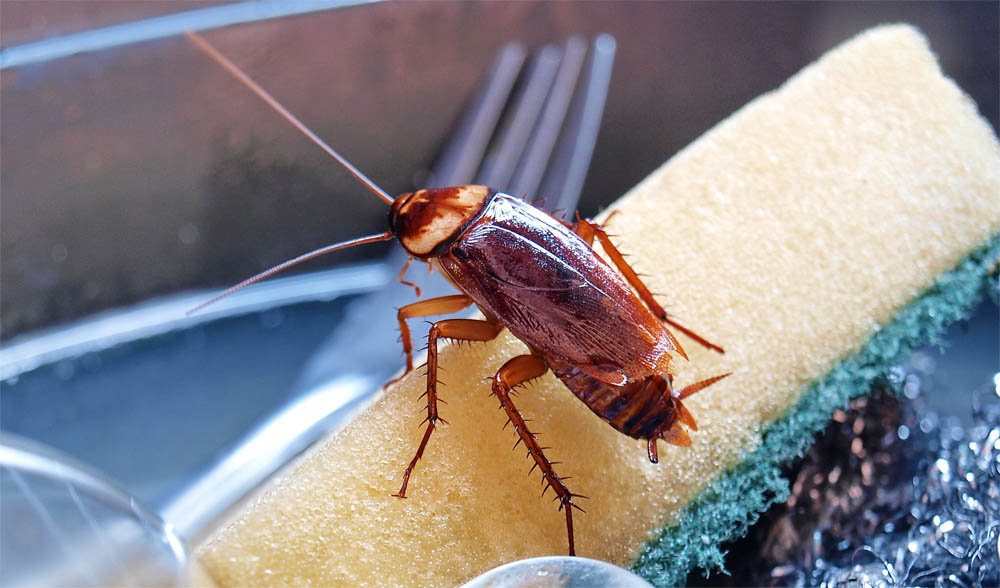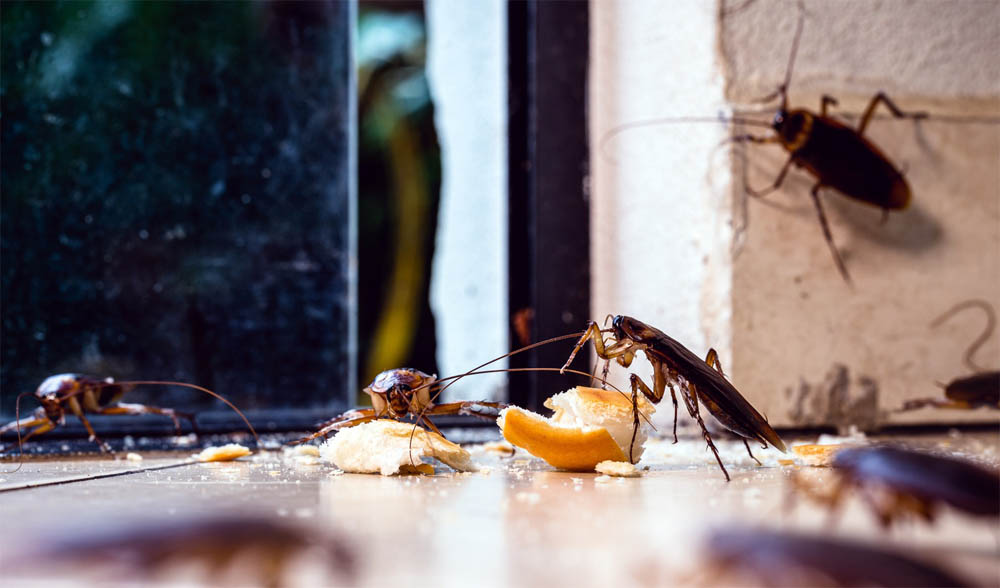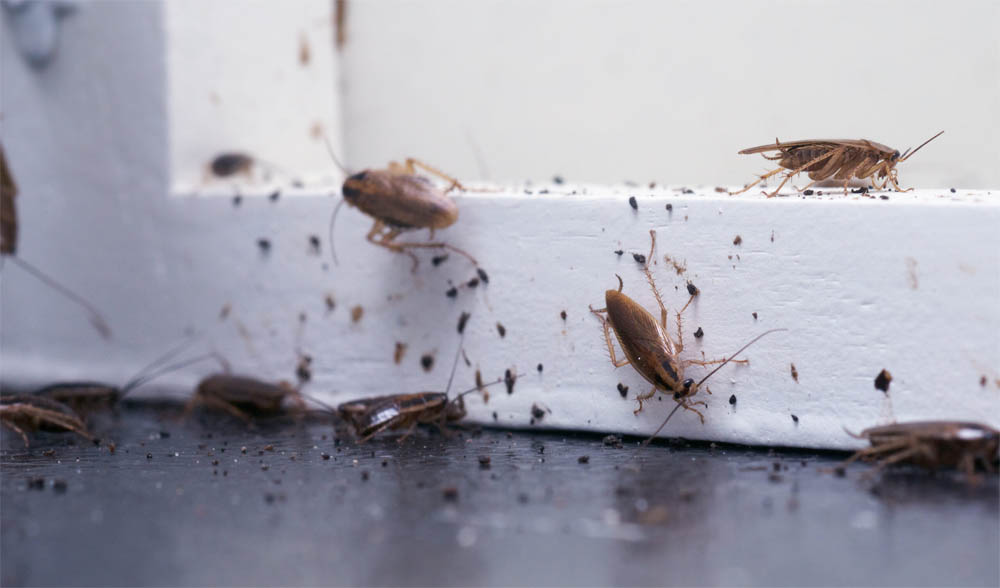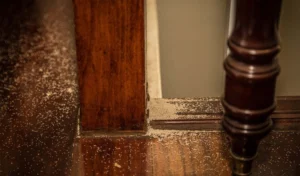As one of the smallest roach species, German cockroaches thrive in nearly all human-inhabited regions, spanning from the North Pole to southern Patagonia. Its remarkable adaptability to diverse climates and environments, coupled with its resistance to numerous common pesticides, makes it a formidable pest. The potential for a substantial infestation stemming from just a few eggs underscores the importance of comprehensive and consistent measures when dealing with these pests.
Given the formidable challenge in eradicating these cockroaches, seeking assistance from professional pest control services often proves prudent. Expert pest management professionals possess the knowledge and expertise required to effectively eliminate German cockroach populations at their source. We’ll offer recommendations for the most competent pest control specialists equipped for this task.

Why and How Do They Come
Regrettably, German cockroaches possess the ability to infiltrate residences through almost any available opening. Despite their adaptability to diverse environments, they cannot withstand severe cold, restricting their survival to the interiors of homes in colder climates. Once indoors, they adeptly conceal themselves within tiny cracks and crevices that are scarcely visible to the naked eye.
These invasive pests seek refuge indoors, driven by the quest for warmth, sustenance, and moisture. They favor hiding spots around electrical wiring, beneath sinks, within walls, and in proximity to water-utilizing appliances. Leaks from pipes and drains serve as accessible water sources, while they forage on a wide array of human or pet food, as well as non-edible substances such as soap and furniture glue.
German cockroaches display a range of hues, spanning from light brown to tan, and typically measure no more than 1.5 centimeters or 0.6 inches in length. Given their nocturnal nature and preference for concealment, the initial indicators may manifest as droppings resembling coffee grounds, oval-shaped egg cases, or a faint musty odor. The presence of live roaches during daylight hours indicates a significant and established issue.
Health Hazards Associated with German Cockroaches
Initially, here’s a positive aspect: German cockroaches are non-aggressive and do not bite, nor do they possess venom. Nonetheless, their peril lies in the bacteria and various disease carriers they transport and can leave in their wake.
Traversing through sewers and unsanitary locales allows them to gather pathogens and allergens, which they subsequently distribute when foraging for food within your kitchen. Moreover, the exoskeletons of cockroaches, which disintegrate into powder post-molting, can trigger allergic reactions in some individuals.

How to Eliminate German Cockroaches
To eliminate German cockroaches from your home, follow these five steps.
1. Recognize the Problem
While numerous methods for controlling roaches prove effective against most cockroach types, it remains prudent to accurately identify the specific insect you’re dealing with. Identifying potential hot spots within your residence is crucial. German cockroaches, despite not establishing a central nest or hive, exhibit heightened activity around heat, water, and food sources.
To conduct an inspection, systematically move through each room using a flashlight, examining cracks and along baseboards for signs of roach presence. Daylight might not reveal live roaches, but you might spot droppings, discarded skins, or deceased roaches. Focus particularly on kitchens and bathrooms, delving into kitchen cabinets and inspecting behind appliances and furniture—common hiding spots for roaches.
For those uncomfortable with such close inspections, an alternative is using sticky traps. Position these traps under sinks, in corners, behind appliances, and near trash receptacles. Although these traps might only capture and eliminate a few roaches and might not suffice for larger infestations, they offer insights into areas with heightened roach activity. This knowledge will guide you in targeting specific regions of your home during the subsequent steps.
2. Clean the Area Where There is High Roach Activity
The objective is to eliminate potential competition for food and water sources, making the bait more appealing to the cockroaches. Yet, avoid utilizing potent or pungent chemicals. Instead, employ strategies such as vacuuming crumbs and debris, decluttering, storing food in airtight containers, and cleansing surfaces with mild dish soap. Furthermore, if you happen to vacuum live roaches or eggs, ensure to seal and discard the vacuum bag or place it in the freezer for several hours to neutralize any living organisms within it.
3. Assess the Need for Additional Insecticide
Apart from the commonly used sprays and bait, there exist alternative methods of cockroach control that can be attempted if bait stations prove insufficient. Insecticide dust options like diatomaceous earth, boric acid, or synthetic formulas possess the ability to penetrate cracks and crevices that even gel bait might not reach. However, it’s crucial not to apply the dust around bait stations as it can counteract their effectiveness.
Moreover, there’s a product known as an insect growth regulator (IGR) that can effectively halt the reproduction of roaches. This substance, available as a liquid or aerosol foam, obstructs cockroach nymphs from shedding their exoskeletons and attaining reproductive maturity, thereby disrupting the breeding cycle. This slower-acting form of insecticide functions optimally in tandem with bait applications.
4. Prevent Them from Coming Back
Once you’re assured that you’ve significantly reduced the infestation, it becomes pivotal to eradicate the conditions that foster a cockroach-friendly environment in your home. When dealing with German cockroaches, maintaining an impeccable level of cleanliness is imperative.

If you opt for using bleach or ammonia—never simultaneously—to cleanse hard surfaces, this is the opportune moment to do so. Give your kitchen and bathrooms a thorough and comprehensive cleaning, ensuring meticulous sealing of all potential food sources.
Simultaneously, address any leaks or drips contributing to standing water accumulation. Seal gaps and fissures along windows, doors, and utility pipes using caulk or suitable sealants to impede roach entry. Transition to a trash container equipped with a tightly fitting lid for food waste disposal. Ventilate or dehumidify basements or crawl spaces to deter moisture buildup.
Furthermore, consider modifying your cleaning routine. Promptly attend to soiled dishes and promptly wipe down countertops to eliminate food or beverage spills. Maintain regular refrigerator cleanouts and dispose of trash containing food waste promptly. Vacuum frequently to eliminate crumbs and any stray cockroach eggs. Strive to minimize clutter as it offers additional hiding spots for roaches.
Seek Help from Safe-Killer
Thankfully, numerous trustworthy and cost-effective insecticide and pest control services specialize in eradicating German cockroaches. Safe-Killer stands out as an expert provider of insecticide and pest control solutions effective against various cockroach species. For further information, reach out to Safe-Killer directly or visit their website at Safe-killer.com.



